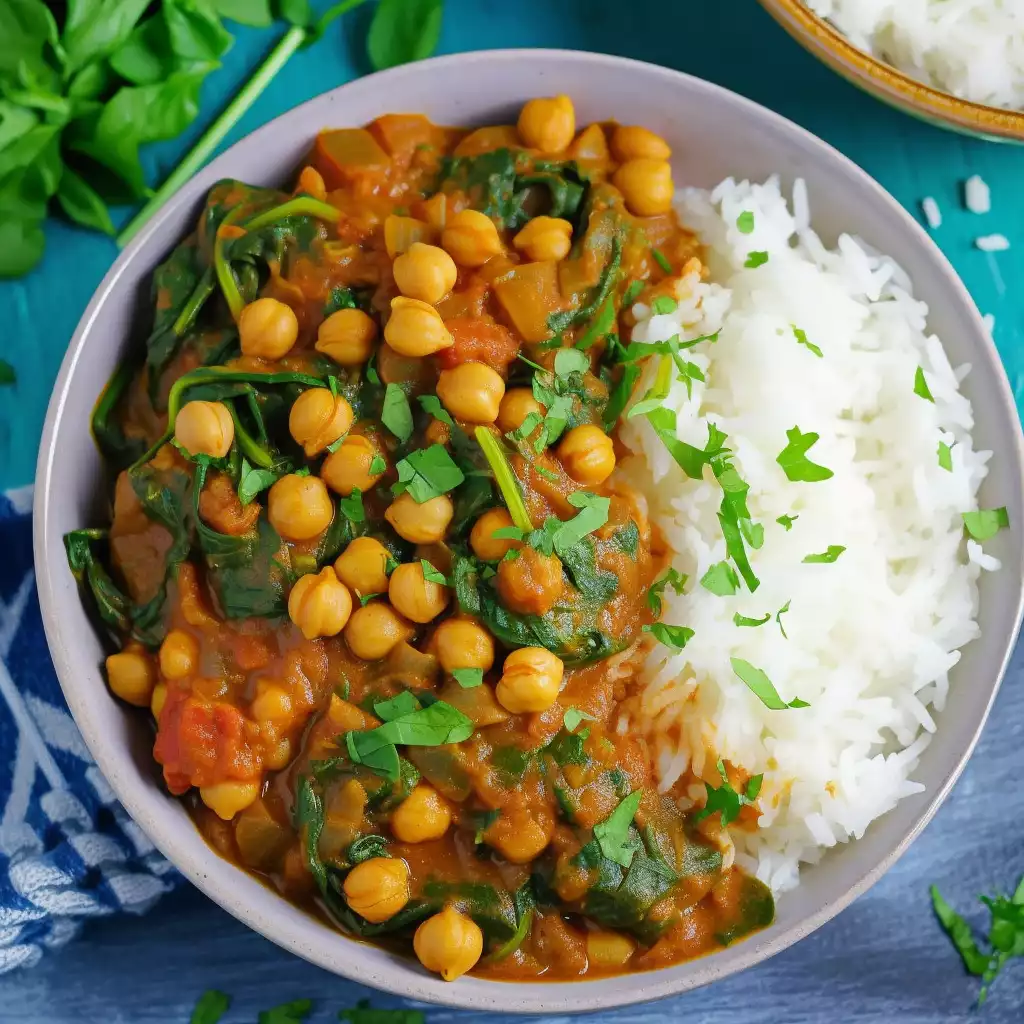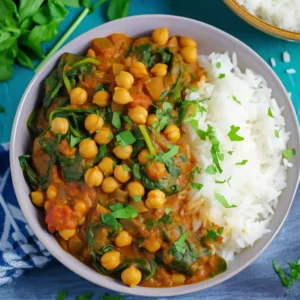
Venture into a world of vibrant flavors with this hearty and aromatic Chickpea and Spinach Curry. Originating from the rich culinary heritage of Indian cuisine, this dish encapsulates the essence of comfort food while offering a nutritious punch.
While traditionally enjoyed as a vegetarian main course, its appeal transcends dietary preferences, making it a beloved choice for anyone seeking a satisfying meal.
Crafting this curry is a delightful journey through a symphony of spices and textures. From the earthy warmth of cumin seeds to the zing of fresh ginger and garlic, each ingredient plays a crucial role in building layers of complexity.
The creamy chickpeas and tender spinach, enveloped in a luscious tomato-based sauce, create a harmonious union that is both filling and wholesome.
Despite its exotic allure, this recipe is surprisingly simple to execute, making it an ideal choice for both novice and seasoned cooks alike. With just a handful of pantry staples and a bit of culinary finesse, you can whip up a batch of this comforting curry to delight your taste buds and nourish your body.
Expert Tip: Experiment with different spice blends or add a pinch of your favorite herbs to tailor the flavor profile to your liking.
Oil: Adds richness and depth to the curry, helping to sauté the aromatics and spices.
Onion: Provides a savory base and adds sweetness to balance the spices.
Garlic: Infuses the dish with aromatic flavor and enhances the overall taste profile.
Ginger: Adds a subtle heat and brightens the flavors of the dish.
Cumin Seeds: Delivers a warm, nutty flavor and adds depth to the curry.
Coriander Powder: Offers a citrusy, earthy flavor that complements the other spices.
Turmeric: Lends a vibrant golden hue and adds a warm, slightly bitter flavor.
Chilli Powder: Adds heat and a kick of spice, adjustable based on personal preference.
Chickpeas: Serve as the protein-rich star of the dish, providing a hearty and satisfying texture.
Spinach: Adds freshness, color, and a boost of nutrients to the curry.
Canned Tomatoes: Form the base of the sauce, providing acidity and sweetness.
Salt: Enhances the flavors of the dish and balances the spices.
Black Pepper: Adds a subtle heat and complements the other spices.
Garam Masala: Infuses the curry with warm, aromatic notes and ties the flavors together.
Coriander (Cilantro): Used as a garnish to add freshness and brightness to the finished dish.
Expert Tip: Don’t skip the step of toasting the cumin seeds before adding the onions. This helps to release their aromatic oils and enhances their flavor.
Expert Tip: For extra creaminess, you can add a splash of coconut milk or cream towards the end of cooking.
The spiciness of the curry can be adjusted to suit your taste preferences by varying the amount of chili powder added. Start with a small amount and gradually increase according to your desired level of heat.
Yes, you can substitute fresh tomatoes for canned ones. Simply chop fresh tomatoes and cook them down until they form a thick sauce-like consistency.
Absolutely! This curry actually tastes even better the next day as the flavors have had time to meld together. Store it in an airtight container in the refrigerator for up to 3-4 days or freeze for longer storage.
Yes, this Chickpea and Spinach Curry recipe is naturally gluten-free, making it suitable for individuals with gluten sensitivities or allergies.
Certainly! Feel free to customize the recipe by adding your favorite vegetables such as bell peppers, carrots, or potatoes for extra flavor and nutrition.
Here are some more recipes for you to enjoy! If you my recipes don’t forget to rate and leave a comment.
If you have any recipe suggestions, please do not hesitate to ask me. A great way to stay in contact with me is through Instagram, Facebook, Twitter and YouTube. Don’t forget to tag me @CookwithNabeela in your recipe photos!

Subscribe now to receive my latest recipes directly in your inbox. Stay up-to-date and never miss out!

I love to cook! I want to share with you my favourite, delicious family-friendly recipes. I want to inspire you to create fantastic food for your family every day.
Add your first comment to this post